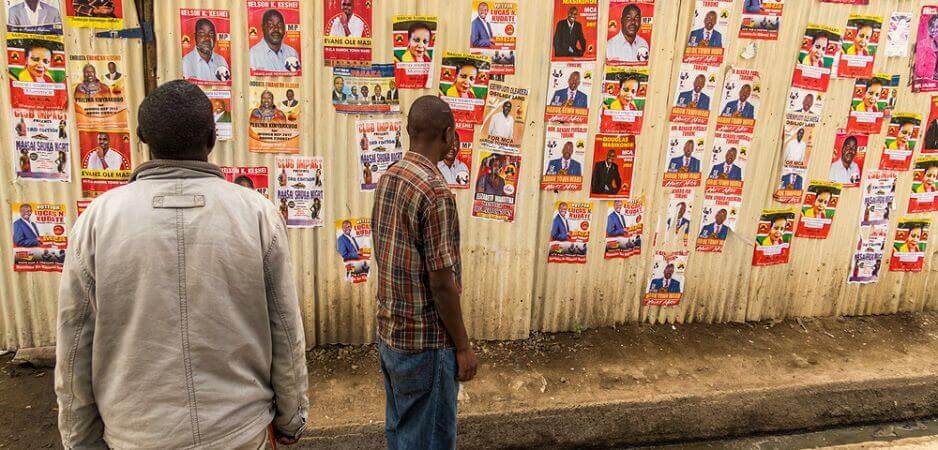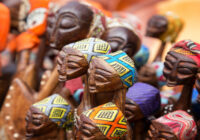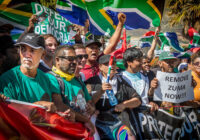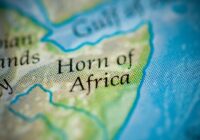Despite familiar faces, this election might mark the end of an era and the emergence of new actors in Kenyan politics.
The general elections on August 8 are the most competitive and hotly contested in Kenyan history. This year, President Uhuru Kenyatta is seeking re-election while opposition leader Raila Odinga is probably running for the last time. It may be the last time Kenyatta is running too because the constitution prohibits a third term.
Opinions polls place Kenyatta and Odinga neck and neck. According to an Infotrack poll, Odinga could beat Kenyatta. He is merely one percentage point ahead with support of 47% of voters in contrast to the 46% that Kenyatta commands.
However, an earlier opinion poll by Ipsos Synovate had Kenyatta at 47%, with Odinga trailing at 43%. Both polls agree that no candidate is likely to get more than 50% of the vote that each needs to be declared the winner. Each candidate also needs to win the support of at least 25 out of the 47 counties in the country.
Another poll by the Centre for Africa Progress puts support for Kenyatta at 53% and Odinga commanding a mere 42%.
CAN OPINION POLLS BE TRUSTED?
Opinion polls are largely favoring Kenyatta. However, there are doubts over whether they can be trusted. Many incumbent leaders have been voted out in Africa over recent months. In The Gambia, Yahya Jammeh, who ruled as a dictatorial president from 1994 to 2017, was defeated by Adama Barrow. In Ghana, people voted in Nana Akufo-Addo, ousting John Mahama. An opposition victory is possible in Kenya too.
In the 2013 general election, Kenyatta and Odinga were the top two presidential candidates. William Ruto and Kalonzo Musyoka were the running mates of Kenyatta and Odinga respectively. They have lined up again in 2017.
In 2013, criminal charges were filed against Kenyatta and Ruto at the International Criminal Court (ICC) for the violence that erupted in the country after the 2007 general election. Both of them were later acquitted, but the charges brought the two of them together. This is ironic because Kenyatta is Kikuyu and Ruto is Kalenjin. These are the two tribes that have been rivals for resources such as land, especially in the Rift Valley. They clashed ferociously after the 2007 elections, leading to much violence and destruction. Once both Kenyatta and Ruto faced charges at the ICC, they kissed and made up. Both gave yet another lease of life to the adage that politics makes strange bedfellows.
Mutahi Ngunyi has declared his “tyranny of numbers” hypothesis, which allowed Kenyatta to win because of Kikuyu-Kalenjin support, to be dead. As per this hypothesis, winning Kenyan elections requires the backing of two big tribes and one small. Kenyatta has two big tribes but no small one. Besides, Ngunyi points out that there is “zero passion; zero excitement” in the Kalenjin nation to “wake up at dawn” and “ferry the sick to polling stations in wheelbarrows” to protect Kenyatta’s presidency.
According to Barrack Muluka, a political analyst and expert on public relations, the new tyranny of numbers in voter registration favors Odinga. Kenyatta’s strongholds have 7.4 million registered voters while Odinga’s bastions have 8.2 million. Battlegrounds like Nairobi have another 4 million. Opinion polls may be wrong and Kenyatta might not win as easily as many expect.
KENYATTA-ODINGA FEUD: THE FATHERS
Kenyan politics is dynastic. Its first president was Jomo Kenyatta, the father of the current head of state. Jaramogi Oginga Odinga, the father of the opposition leader, was the opposition leader. Initially, both were members of the Kenya African National Union (KANU), which was the leading party that fought for independence against the British. Odinga served as the vice chairman of KANU, while Kenyatta was the party president. KANU’s membership was then dominated by the Kikuyu and Luo tribes.
After independence in 1963, Kenya became a one-party state with Kenyatta as president and Odinga as the second-in-command. Harmonious relations between the two soon gave way to ideological differences and political enmity. Odinga criticized Kenyatta, marking the beginning of opposition politics in the country.
When Pio Gama Pinto, then a member of parliament, was assassinated in 1965, Odinga became more vocal against Kenyatta’s government. Pinto was the first Kenyan politician to be assassinated after independence and his family migrated to Canada two years after his death. In 1966, Odinga formed the Kenya People’s Union (KPU) to challenge Kenyatta.
Matters got tense in 1969. During Kenyatta’s visit to Kisumu, a confrontation broke out between Kenyatta and Odinga. As a result, the crowd started throwing stones at the president. Kenyatta’s security fired at the crowds, causing what is now known as the Kisumu Massacre that reportedly left many dead and hundreds injured.
Kenyatta followed this massacre with the banning of KPU and the arrest of Odinga. Till date, the Luos have neither forgotten nor forgiven the Kenyatta clan and the Kikuyus for the violence of 1969. Similarly, the Kikuyus continue to distrust the Luos.
Kenyatta Jr. and Odinga Jr. continue the rivalry their fathers started. This election might be the last time that the Kenyatta and Odinga clans clash in this generation.
TRIBAL POLITICS
Even if the Kenyatta-Odinga feud ends, Kenya’s tribal politics will continue. Since independence, Kenya has been ruled by presidents from two communities. In a country of 44 tribes, the Kikuyu and the Kalenjin have maintained a duopoly on power.
 Kenya’s first, third and fourth presidents have all been Kikuyu, while its second president was Kalenjin. Kenyans vote on tribal lines. For instance, Kenyatta’s Jubilee Party has a following among the Kikuyu, Kalenjin and the Cushitic communities in the northern part of Kenya, including the Somali, Borana, Rendile, Ormo and Gabra peoples. Raila Odinga’s National Super Alliance has followers from the Luo, Abaluhya, Abagusii, Turkana, Kamba and Mijikenda tribes, dominating the coastal part of Kenya in particular.
Kenya’s first, third and fourth presidents have all been Kikuyu, while its second president was Kalenjin. Kenyans vote on tribal lines. For instance, Kenyatta’s Jubilee Party has a following among the Kikuyu, Kalenjin and the Cushitic communities in the northern part of Kenya, including the Somali, Borana, Rendile, Ormo and Gabra peoples. Raila Odinga’s National Super Alliance has followers from the Luo, Abaluhya, Abagusii, Turkana, Kamba and Mijikenda tribes, dominating the coastal part of Kenya in particular.
To be fair, voting is not entirely along tribal lines. The Abaluhya support candidates from any tribe and have a reputation for being the most democratic of all Kenyan communities. Yet tribal identity matters. Those who are not Kikuyu or Kalenjin often feel neglected and marginalized by the government because the dominant two tribes have garnered a lion’s share of the country’s resources. These two tribes tend to vote as a block and so do the others. That is unlikely to change significantly in the forthcoming election.
FEMALE AND INDEPENDENT CANDIDATES
Women are greatly underrepresented in Kenyan politics. In 2013, the only female candidate for the presidency came sixth. This year, the only woman who was running for president was banned for failing to abide by election rules.
Kenya forms part of a pan-African pattern. Out of the 54 African countries, Liberia is the only country with a female president. Ellen Johnson Sirleaf, the first elected female head of state in Africa, is unlikely to have any company from Kenya.
A record number of independent candidates are running for office. Of the 15,082 candidates in the 2017 general elections, 3,752 are independent candidates. In 2013, this number was 350. Three independent candidates are running for the presidency itself. The promulgation of the new constitution in 2010 has led to the delegation of powers to the counties of the country. This increased democratization has been accompanied by a huge rise in independent candidates.
Women may not yet be competing for the top job in Kenya, but the Kenyatta-Odinga feud is coming to an end and democracy is deepening, even if messily.
*[This article was updated on August 8, 2017, at 12:51 GMT.]
The views expressed in this article are the author’s own and do not necessarily reflect Fair Observer’s editorial policy.
Photo Credit: Stephen Butler / Shutterstock.com
Support Fair Observer
We rely on your support for our independence, diversity and quality.
For more than 10 years, Fair Observer has been free, fair and independent. No billionaire owns us, no advertisers control us. We are a reader-supported nonprofit. Unlike many other publications, we keep our content free for readers regardless of where they live or whether they can afford to pay. We have no paywalls and no ads.
In the post-truth era of fake news, echo chambers and filter bubbles, we publish a plurality of perspectives from around the world. Anyone can publish with us, but everyone goes through a rigorous editorial process. So, you get fact-checked, well-reasoned content instead of noise.
We publish 2,500+ voices from 90+ countries. We also conduct education and training programs
on subjects ranging from digital media and journalism to writing and critical thinking. This
doesn’t come cheap. Servers, editors, trainers and web developers cost
money.
Please consider supporting us on a regular basis as a recurring donor or a
sustaining member.
Will you support FO’s journalism?
We rely on your support for our independence, diversity and quality.






